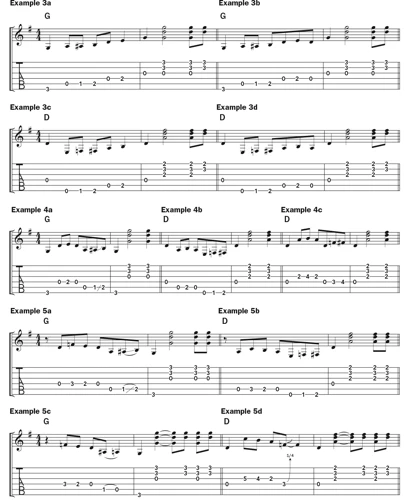Flatpicking is a popular technique in country music that involves using a flat pick to strike individual strings on a guitar. This technique has been used by some of the most legendary country musicians of all time, and it continues to be a fundamental skill for many players today. In this article, we will explore the benefits of flatpicking in country music.
Develops Technique and Accuracy
One of the primary benefits of flatpicking in country music is that it helps to develop technique and accuracy. Striking individual strings with a flat pick requires a high degree of precision and control, which can be challenging for beginners. However, with practice, flatpicking can help to improve finger dexterity, hand-eye coordination, and overall playing ability.
Adds Variety to Your Playing
Flatpicking can also add variety to your playing style. By using a flat pick, you can create a sharper, more defined sound that can cut through a mix of instruments. This technique is particularly useful for playing lead lines and solos, as it allows you to articulate individual notes more clearly. Additionally, flatpicking can be used to create a wide range of tones and textures, from delicate fingerstyle playing to aggressive, driving rhythms.
Allows for Faster Playing
Another benefit of flatpicking in country music is that it allows for faster playing. Because flatpicking involves striking individual strings, rather than strumming multiple strings at once, it can be easier to play complex passages and fast-paced solos. This is particularly true when playing in the key of G, which is a common key in country music and lends itself well to flatpicking.
Connects You to Country Music History
Flatpicking has a rich history in country music, and learning this technique can help you connect with that history. Many of the most iconic country musicians, such as Chet Atkins, Doc Watson, and Jerry Reed, were masters of flatpicking. By learning this technique, you can gain a deeper appreciation for their music and the contributions they made to the genre.
Improves Rhythm and Timing
Flatpicking can also help to improve your rhythm and timing. Because flatpicking involves striking individual strings, it requires a high degree of precision and timing. This can help you develop a stronger sense of rhythm, which is essential for playing with other musicians. Additionally, flatpicking can help you develop a better understanding of how different rhythms and time signatures work, which can be useful for composing your own music.
Enhances Your Musical Vocabulary
Learning to flatpick can also enhance your musical vocabulary. By exploring different techniques and approaches to flatpicking, you can discover new ways to express yourself musically. For example, you might experiment with different picking patterns, or try using a variety of chord inversions to create new voicings and harmonies. This can help you develop a more nuanced and expressive playing style.
Provides a Challenge for Experienced Players
Flatpicking can also provide a challenge for experienced players. While it may seem simple at first, mastering this technique requires a high degree of skill and finesse. By continuing to practice and refine your flatpicking technique, you can keep your skills sharp and continue to grow as a musician.
Can Be Applied to Other Genres
Finally, flatpicking is not just limited to country music. This technique can be applied to a wide range of genres, from bluegrass and folk to rock and pop. By learning to flatpick, you can expand your musical horizons and bring new textures and tones to your playing.
Interested in exploring different guitar techniques in country music? Check out our articles on learning flatpicking in country music, fingerpicking in country music, and hybrid picking in country music for a deeper understanding of guitar styles in the genre. You can also discover flatpicking patterns in country songs and learn about the history of flatpicking in country music to enhance your musical knowledge and skills!
Conclusion
In conclusion, flatpicking is a valuable technique for any country musician to learn. It can help to develop technique and accuracy, add variety to your playing, allow for faster playing, connect you to country music history, improve your rhythm and timing, enhance your musical vocabulary, provide a challenge for experienced players, and be applied to other genres. By incorporating flatpicking into your practice routine, you can become a more versatile and expressive musician.



